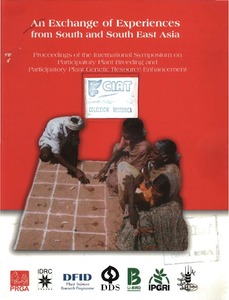Adding benefits to local crop diversity as a sustainable means of on-farm conservation: A case study of an in situ project from Nepal
Effective management and conservation of genetic resources on-farm takes place where the genetic resources are valued and used to meet the needs of local communities. The in situ conservation project supported by the International Plant Genetic Resources Institute (IPGRI) in Nepal recognizes that farmers maintain local crap genetic resources if they remain competitive with other options or have value for special use. It has been demonstrated that community participation can be strengthened by sensitizing the farming community and consumers through public awareness, by developing markets for local products or providing market incentives, by improving the farmer's varieties and adding benefits through policy incentives. A variety of innovative and participatory initiatives to increase the value and benefits of landraces for farmers has been identified, and three strategic options in adding benefits were used in this study. Option l-participatory plant breeding, seed networks, and grassroots strengthening-seeks to improve quality, disease resistance, high yield, better taste, and other preferred traits through technical means, including seed networks and participatory plant breeding. Option 2-non-market and nonbreeding-includes creating awareness and sensitizing communities through educational means. Option 3-market methods-works through improved markets and information. Tools like diversity fairs, diversity blocks, and community biodiversity registers (CBRs) have been found effective in consolidating the roles of the farming community in the conservation process. This paper documents some processes using diversity fairs and CBRs that demonstrated how various options for adding benefits could be developed, tested, and linked with market networks.

